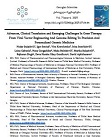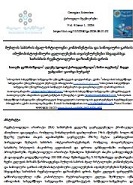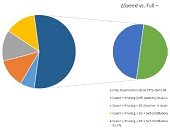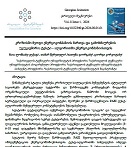FIRE SAFETY ANALYSIS OF VENTILATING SYSTEMS OF ROAD TUNNELS
Print version was published: Mining Journal, #1(24), 2010
Downloads
The method of mathematical modeling analyses influence of strong and very strong fire on ventilating systems of road tunnels with the purpose of an establishment of the period of their collapse and management of extreme situations. Models are executed for longitudinal ventilation system with using jet fans and for semi- cross-section sucking away system of airing which are adapted in Georgia. On models the temperature of a fire varied within the limits of 300-1000, and its thermal capacity - 30-100 MW. At temperature 1000 for semi-transverse exhaust ventilation system the period of approach of a collapse changes within the limits of 0.5-2.5 mines depending on thermal capacity of a fire. About the same size the longitudinal system of ventilation with application of jet fans is characterized also. From the point of view of management of emergency situations at strong and very strong fire any of the considered systems is not characterized by efficiency. In this case for rescue of a life and an infrastructure one of the basic methods is operative division of a tunnel into short sites by means of moved apart crosspieces who will interfere with uncontrolled distribution of toxic gases and superfluous heat in underground space.
Downloads
Metrics
The White Book 2001, Published in April 24, 2001, Sweet 8c Maxwell Ltd, ISBN 10: 0421745800, ISBN 13:9780421745803.
D. Theologitis. Eurotransport, 2005, Мг 3. pp. 16 — 22.
O. Lanchava, E. Medzmariashvili, N. Ilias, G.Khitalishvili, Z. Lebanidze. Prospects of usage of transforming systems for extinguishing fire in tunnels. International Scientific Conference “Advanced Lightweight Structures and Reflector Antennas”, Tbilisi, 2009. pp. 301-308.
ო. ლანჩავა. რიკოთის საავტომობილო გვირაბის სავენტილაციო სისტემის მოდერნიზაციის საკითხისათვის. „სამთო ჟურნალი“, №1-2, (16-17), თბილისი , 2006. გვ. 57-59.
O.Lanchava, em I. Andras, R. Moraru, I. Neag. On the Ventilation of Transport Tunnels in the Presence of a Strong (Heavy) Fire. Annals of the University of Petrosani, Petrosani (Romania), 2007, Vol. 9 (XXX VI), Part l pp. 219-227.
Ланчава О.А., Лебанидзе 3.5. По поводу коллапса системы вентиляции тоннеля при сильном пожаре. Журнал «Транспорт», N934 (31-32), Тбилиси , 2008. с. 29-31.
Ланчава О.А. Моделирование теплопереноса в горном массиве на интеграторе БУСЭ. Процессы горного производства, N97 (319). Изд. ГПИ, Тбилиси, 1987. с. 33-38.
UN, Economic and Social Council, Economic Commission for Europe, Report TRANS/AC, 7/9,2001. P.59.
A. Beard, R. Carvel. Handbook of tunnel fire safety. Technology & engineering. Thomas Telford Ltd, London, 2005. P. 514.
A. Haack. Fire Protection in Traffic Tunnel: General Aspects and Results of the EUREKA Project, TUNNELING AND UNDERGROUND SPACE TECHNOLOGY, 1998, Volume 13, № 2. Pp. 377-381.
E. Fermi. Thermodynamics, New York, Prentice- Hall Inc, 1937. 140 p .
M.E. Серебряков. Внутренняя балистика. Москва, Оборонгиз, 1949. 670с.
UN, Economic and Social Council, Economic Commission for Europe, Report TRANS/AC. 7/11, 2002. P. 6.
Copyright (c) 2021 O. A. Lanchava

This work is licensed under a Creative Commons Attribution-NonCommercial-NoDerivatives 4.0 International License.















































































































































































































